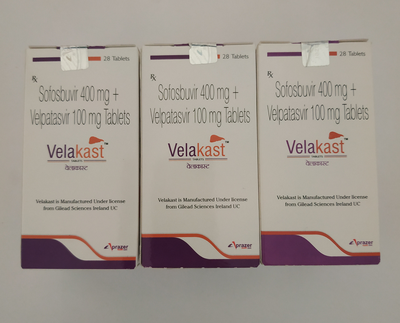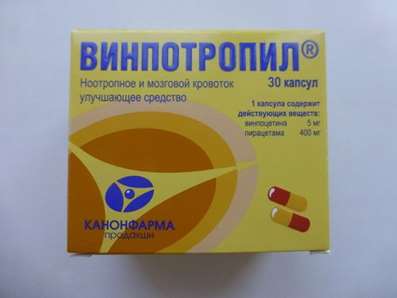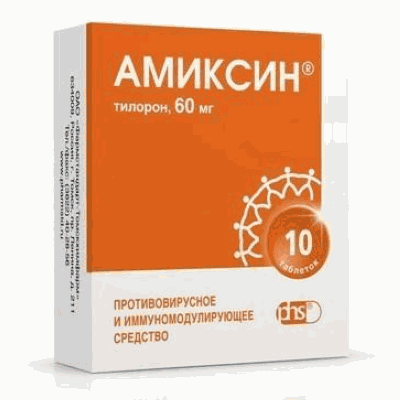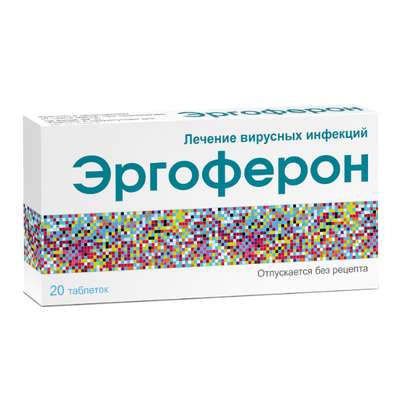Instruction for use: Hartmann's Solution
I want this, give me price
Dosage form: Solution for infusions
Active substance: Solutio Natrii chloridi composita (Kalii chloridum+ Calcii chloridum+Natrii chloridum+Natrii lactas)
ATX
B05BB01 Electrolytes
Pharmacological groups
Regulators of water and electrolyte balance and acid-base balance in the combinations
Substitutes for plasma and other blood components in combinations
The nosological classification (ICD-10)
E86 Decreased fluid volume [hypovolaemia]: Water deficit recovery; Indemnification of isotonic deficiency of water; Compensation for isotonic sodium deficiency; Compensation BCC; Replenishment of water deficit with stored KShS; Replenishment of fluid volume; Replenishment of BCC; Replenishment of electrolytes with stored KHS; Hypovolemic conditions; Hypovolemic condition; Hypovolemia; Hypotonic form of hypohydration; Hypochloremia with dehydration; Dehydration of different origin; Dehydration in children; Substitution of plasma volume for blood loss in pediatrics; Substitution of plasma with its losses and burns; Isotonic dehydration; Isotonic form of hypohydration; Violation of the water-salt balance; Dehydration;Dehydration in acute intestinal infections; Acute hypovolemia; Loss of fluid in burns; Toxicosis with exsycosis
E87 Other disturbances of water-salt and acid-base state: Violation of acid-base balance; Water-electrolyte disturbances; Compensation for isotonic sodium deficiency; Replenishment of electrolytes with stored KHS; Deficiency of water and electrolytes; Depletion of alkaline blood reserve; Violation of the water-salt balance; Violation of water-salt metabolism; Violation of water-electrolyte exchange; Violation of KHS; Violation of electrolyte balance; Violations of the water-salt balance; Violations of the water-electrolyte state; Violations of the electrolyte balance; Loss of salts and fluids in diarrhea; Extracellular dehydration
K59.1 Functional Diarrhea: Diarrheal Syndrome; Diarrhea; Diarrhea with prolonged enteral feeding through the probe; Prolonged diarrhea; Nonspecific diarrhea; Acute diarrhea; Syndrome of diarrhea; Functional diarrhea; Chronic diarrhea; Diarrhea with an electrolyte balance disorder; Chronic diarrhea; Diarrhea of non-infectious genesis; Diarrhea after a gastroectomy; Diarrhea in children; Persistent diarrhea; Diarrhea (diarrhea); Enterocolitis of non-infectious origin
K65 Peritonitis: Abdominal infection; Intra-abdominal infections; intra-abdominal infections; Diffuse peritonitis; abdominal Infections; Infections of the abdominal cavity; The infection of the abdominal cavity; The infection of the gastrointestinal tract; Spontaneous bacterial peritonitis
R11 Nausea and vomiting: Postoperative vomiting; Nausea; Vomiting; Vomiting in the postoperative period; Vomiting medication; Vomiting in the background of radiation therapy; Vomiting uncontrollable; Vomiting in radiation therapy; Persistent vomiting; Indomitable vomiting; Postoperative nausea; Vomiting with chemotherapy; Vomiting of the central genesis; Vomiting with cytotoxic chemotherapy; Persistent hiccups; Repeated vomiting
R57 Shock, not elsewhere classified: Obstructive shock
R68.8 Other specified general symptoms and signs: Toxemia
T08-T14 Injuries to the unspecified part of the trunk, limb or body region
T30 Thermal and chemical burns of unspecified site: Pain syndrome with burns; Pain in burns; Pain with burns; Sluggishly healing post-burn wounds; Deep burns with a wet scab; Deep burns with abundant compartments; Deep burn; Laser burn; Burn; Burn of rectum and perineum; Burn with mild exudation; Burn disease; Burn injury; Superficial burn; Superficial burn of I and II degree; Superficial skin burns; After-burn trophic ulcer and wound; Post-burn complication; Loss of fluid in burns; Sepsis burn; Thermal burns; Thermal skin lesions; Thermal burn; Trophic after-burn ulcers; Chemical burn; Surgical burn
T79.4 Traumatic shock: Haemorrhagic shock; Crash Syndrome; Posthemorrhagic shock; Postoperative shock; Post-traumatic shock; Post-traumatic shock; Traumatic shock; Syndrome of hemorrhagic shock and encephalopathy
T81.1 Shock during or after the procedure, not elsewhere classified: Operating shock; Postoperative shock; Operational shock
Z100 * CLASS XXII Surgical practice: Abdominal surgery; adenomectomy; Amputation; Coronary angioplasty; Angioplasty of the carotid arteries; Antiseptic skin treatment for wounds; Antiseptic Hand; Appendectomy; atherectomy; Balloon coronary angioplasty; Vaginal hysterectomy; The coronary bypass; Interventions in the vagina and cervix; Interventions on the bladder; Intervention in the mouth; Restoration and reconstructive surgery; Hand hygiene of medical personnel; Gynecologic surgery; Gynecological intervention; Gynecological surgery; Hypovolemic shock during operations; Disinfection of purulent wounds; Disinfection of wounds edges; Diagnostic intervention; Diagnostic procedures; Cervical Diathermocoagulation; Long-surgery; Replacing the fistula catheters; Infection in orthopedic surgery; Artificial heart valve; cystectomy; Short-term outpatient surgery; Short-term operation; Short surgical procedures; Krikotireotomiya; Blood loss during surgery; Bleeding during surgery and in the postoperative period; Kuldotsentez; laser photocoagulation; laser coagulation; retinal laser coagulation; Laparoscopy; Laparoscopy in Gynecology; CSF fistula; Small gynecological operations; Small surgical procedures; Mastectomy and subsequent plastic; mediastinotomy; Microsurgical operations on the ear; Mukogingivalnye operation; suturing; Minor surgery; neurosurgical operation; Immobilization of the eyeball in ophthalmic surgery; testectomy; pancreatectomy; Perikardektomiya; The period of rehabilitation after surgery; The period of convalescence after surgery; Percutaneous transluminal coronary angioplasty; Pleural thoracentesis; Pneumonia postoperative and posttraumatic; Preparation for surgical procedures; Preparation for surgery; Preparation of the surgeon's hands before surgery; Preparation of the colon for surgical procedures; Postoperative aspiration pneumonia in neurosurgical and thoracic surgery; Postoperative nausea; Postoperative bleeding; postoperative granuloma; postoperative shock; The early postoperative period; myocardial revascularization; Radiectomy; gastric Resection; bowel resection; uterine Resection; liver Resection; enterectomy; Resection of part of the stomach; Reocclusion of the operated vessel; Bonding tissues during surgical procedures; Removal of sutures; Condition after eye surgery; Condition after surgery; Condition after surgery in the nasal cavity; Condition after gastrectomy; Status after resection of the small intestine; Condition after tonsillectomy; Condition after removal of the duodenum; Condition after phlebectomy; Vascular surgery; Splenectomy; Sterilization of surgical instruments; Sterilization of surgical instruments; sternotomy; Dental surgery; Dental intervention in periodontal tissues; strumectomy; Tonsillectomy; Thoracic surgery; Thoracic surgery; total gastrectomy; Transdermal intravascular coronary angioplasty; Transurethral resection; Turbinektomiya; Removal of a tooth; cataract surgery; Removal of cysts; tonsillectomy; Removal of fibroids; Removing the mobile primary teeth; Removing polyps; Removing broken tooth; Removal of the uterus body; Removal of sutures; Fistula likvoroprovodyaschih ways; Frontoetmoidogaymorotomiya; Surgical infection; Surgical treatment of chronic limb ulcers; Surgery; The surgery in the anal area; The surgery on the colon; Surgical practice; The surgical procedure; Surgical interventions; Surgery on the gastrointestinal tract; Surgical procedures on the urinary tract; Surgical procedures on the urinary system; Surgical intervention of the genitourinary system; Surgical procedures on the heart; Surgical manipulation; surgery; Surgery on the veins; Surgical intervention; Vascular surgery; Surgical treatment of thrombosis; Surgery; cholecystectomy; Partial gastric resection; hysterectomy; Percutaneous transluminal coronary angioplasty; Percutaneous transluminal angioplasty; Coronary artery bypass; tooth Extirpation; Extirpation of milk teeth; pulpectomy; pulsative cardiopulmonary bypass; tooth Extraction; teeth Extraction; cataract extraction; Electrocoagulation; endourological intervention; episiotomy; Etmoidotomiya; Complications after tooth extraction
Composition and release form
Solution for infusion 1 liter
Calcium chloride 0.294 g
Potassium chloride 0.373 g
Sodium chloride 6.02 g
Sodium lactate solution 6.276 g
Hydrochloric acid
water for injections
(Corresponding to: sodium (Na +) 131 mmol, potassium (K +) 5 mmol, calcium (Ca2 +) 2 mmol, chloride (Cl-) 112 mmol, lactate 28 mmol)
The theoretical osmolarity is 278 mosmol
In plastic bottles of 500 ml; In a pack of cardboard 10 bottles
Description of dosage form
Clear colorless solution.
Pharmachologic effect
Mode of action - Plasma-substituting.
Increases the volume of plasma, replenishes the deficiency of electrolytes.
Indications of the drug Hartmann's Solution
Replenishment of water and electrolytes deficiency with preserved acid-base balance or weak acidosis (vomiting, diarrhea, burns, peritonitis, severe infections); Maintaining the volume of extracellular fluid during and after operations; Initial therapy of blood, shock, and trauma.
Contraindications
Hypertonic dehydration, alkalosis, lactate acidosis, acute renal failure, pulmonary edema, severe liver dysfunction, pregnancy.
Dosing and Administration
IV (in the form of infusions), with an average speed of 60 drops / min, up to 2500 ml / day, i.e. 2.5 ml / kg / h, with urgent conditions - up to 100 drops / min, in a volume that depends on the patient's condition. During the first 24 hours, it is necessary to provide a daily requirement and half the fluid deficit, during the next 2 days - 1/4; Parts of fluid deficiency every day. Thus, the total fluid deficit is compensated within 72 hours. When recovering a previously lost liquid, it is necessary to take into account the loss that continues and compensate it.
Precautions measures
It is necessary to constantly monitor the acid-base balance. It is not recommended to apply for correction of significant deficiency of potassium and calcium cations. Use with caution in heart failure, impaired renal and hepatic function, hypoproteinemia, against corticosteroids or corticotropin.
Storage conditions of the drug Hartmann's Solution
At a temperature of 15-25 ° C.
Keep out of the reach of children.
The shelf life of the drug Hartmann's Solution
3 years.
Do not use beyond the expiration date printed on the package.

 Cart
Cart





